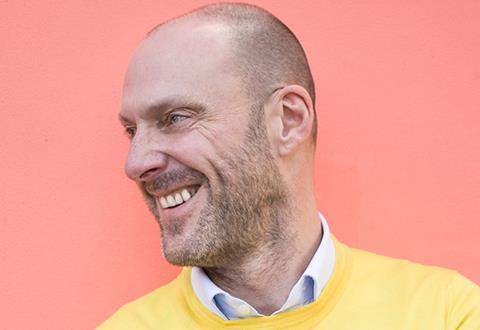What matters is bringing about positive change not just what we say in posts, suggests Martyn Evans

Over the last three weeks our company, probably like many others, has grappled with how to respond to the Black Lives Matter campaign in the most appropriate way. Suggestions ranged from not at all (it’s not for us, as a corporate entity, to hold political views) to opening up all our social media channels in support of the campaign. The point about most of the responses we considered initially was that they all… missed the point. What we should have been thinking, immediately, is how the worldwide campaign might cause us to reflect on the power we have as employers and makers of places to have a direct, practical, positive impact on the issue of diversity.
As I watched and read the news play out I saw fury raise its head twice. First in direct response to the killing of George Floyd – the catalyst for the worldwide activism that immediately unfolded – and then a separate anger about the response from many people who considered updating their social media a sufficient response.
Many felt that even though widespread social media does an effective job in raising the profile of any issue, it’s an easy response that salves people’s consciences and excuses them from thinking any more deeply about why this is an issue in the first place. Pooja Agrawal of Public Practice tweeted a link to the mayor of London’s handbook on diversity with the plea: “All I can say for now is that showing solidarity on social media is not good enough. Some practical actions here. Do more.”
This is the reason we are taking the action we are in our company. It felt right to us that we should find a response to the campaigning that was appropriate for the anger that inspired it. Like many issues where people feel a disadvantage in daily life, the original injustice or discrimination is bad enough but where it’s compounded by inaction masked by a lip-service response it makes it even worse. It’s what’s fuelled a widespread unease about the government’s announcement of a new commission on diversity. People have, not unreasonably, asked why it can’t just review all the previous enquiries and commissions and adopt their recommendations.
As employers in the built environment sector we should recognise that our industry has not been as progressive on diversity issues as it could have been – on all measures including race, gender, sexuality and social background. It’s getting better, but it needs to happen faster.
In my own company, our conversations have moved quite quickly away from asking ourselves how to respond most appropriately to the campaign to setting up an internal review of our policies and practices. We are already putting in place a series of actions to address issues of diversity both in our own workforce and in the design and development of the places we build. It feels important to me that we should spend our energies on taking action to put things right rather than beating ourselves up feeling ashamed or guilty about any unintentional personal complicity.
We also need to be better at making the places we design as sustainable-through-diversity as possible
We have to recognise that if we don’t have enough women, LGBTQ people or people of colour in the senior management of our company (we don’t, apart from me: gay), then there’s only one way of putting that right – and that’s to put more of those people in those positions. If the pool of applicants doesn’t offer enough choice to consider, through merit, a properly diverse shortlist, then we have a responsibility to find ways of enriching those shortlists by encouraging more diversity in the application process and by supporting those rising up through the internal ranks. There is a huge amount of help and support available around our industry and in the human resource profession generally to address this issue.
We also need to be better as an industry in making the places we design and build as sustainable-through-diversity as possible. From the simplest action of making sure that when we visualise our projects we show them to be as diverse as real life, to the much more complex issue about making sure we design places to encourage and celebrate diversity.
>> Also read: We need to address the prejudice and exploitation that underpin our national myths
This is when all these issues conflate. If our companies are not diverse enough internally, then how can we instinctively understand how to make our schemes diverse? If we don’t do our public consultation well enough, understanding that if we want a properly comprehensive understanding of community views we need to go out and proactively hunt it down, we will fail to make representative places that offer opportunities for everyone to thrive.
As an industry we have a lot to do. The most immediate response we can offer to the action taken last week by people all over the world to protest that black lives matter is to say, “yes, they do” and take practical day-to-day actions that contribute to our collective responsibility to make life better for everyone.
















1 Readers' comment